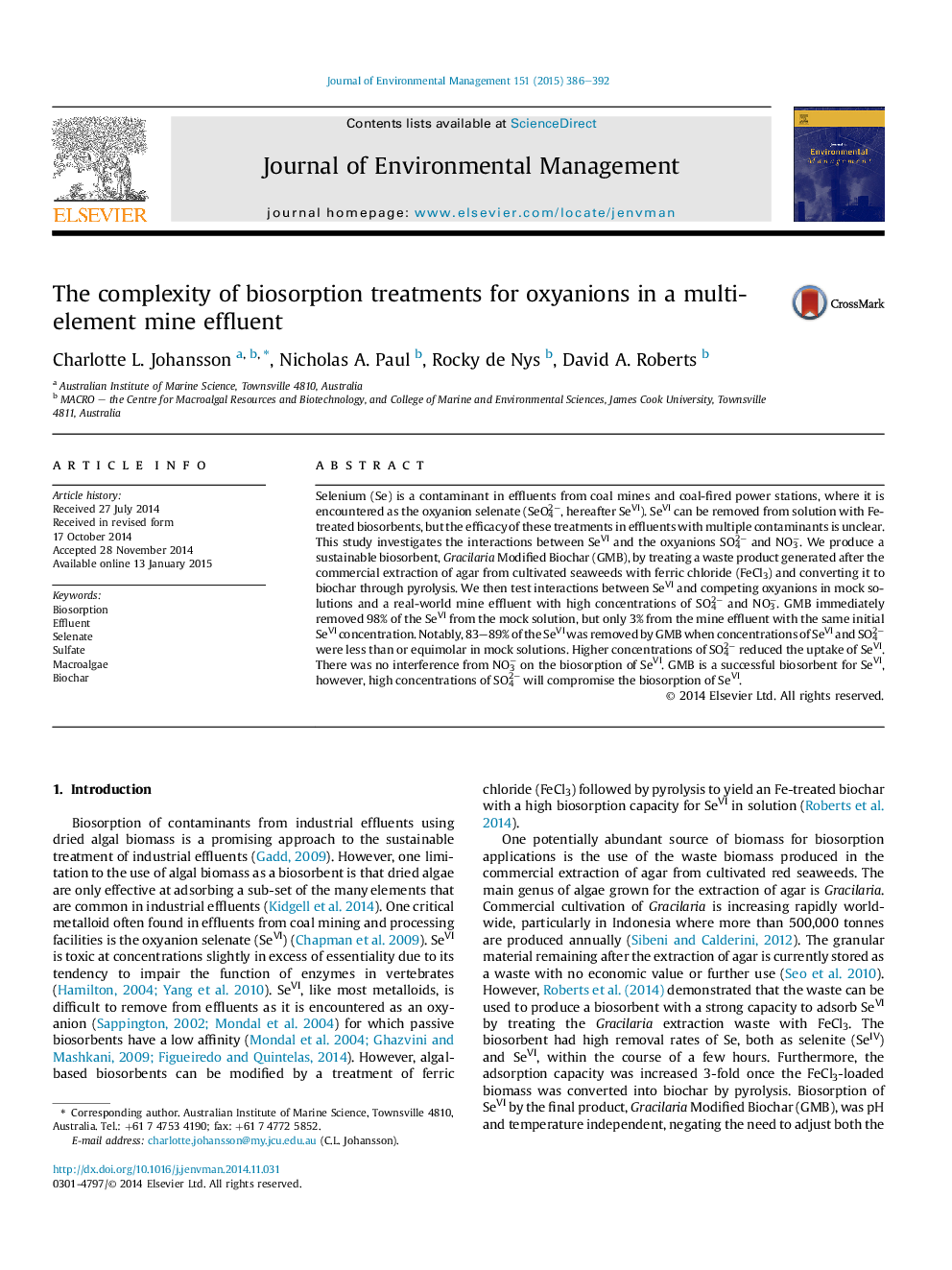| Article ID | Journal | Published Year | Pages | File Type |
|---|---|---|---|---|
| 7483048 | Journal of Environmental Management | 2015 | 7 Pages |
Abstract
Selenium (Se) is a contaminant in effluents from coal mines and coal-fired power stations, where it is encountered as the oxyanion selenate (SeO42â, hereafter SeVI). SeVI can be removed from solution with Fe-treated biosorbents, but the efficacy of these treatments in effluents with multiple contaminants is unclear. This study investigates the interactions between SeVI and the oxyanions SO42â and NO3â. We produce a sustainable biosorbent, Gracilaria Modified Biochar (GMB), by treating a waste product generated after the commercial extraction of agar from cultivated seaweeds with ferric chloride (FeCl3) and converting it to biochar through pyrolysis. We then test interactions between SeVI and competing oxyanions in mock solutions and a real-world mine effluent with high concentrations of SO42â and NO3â. GMB immediately removed 98% of the SeVI from the mock solution, but only 3% from the mine effluent with the same initial SeVI concentration. Notably, 83-89% of the SeVI was removed by GMB when concentrations of SeVI and SO42â were less than or equimolar in mock solutions. Higher concentrations of SO42â reduced the uptake of SeVI. There was no interference from NO3â on the biosorption of SeVI. GMB is a successful biosorbent for SeVI, however, high concentrations of SO42â will compromise the biosorption of SeVI.
Related Topics
Physical Sciences and Engineering
Energy
Renewable Energy, Sustainability and the Environment
Authors
Charlotte L. Johansson, Nicholas A. Paul, Rocky de Nys, David A. Roberts,
